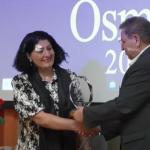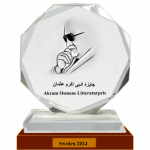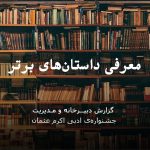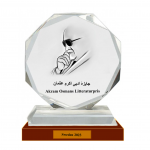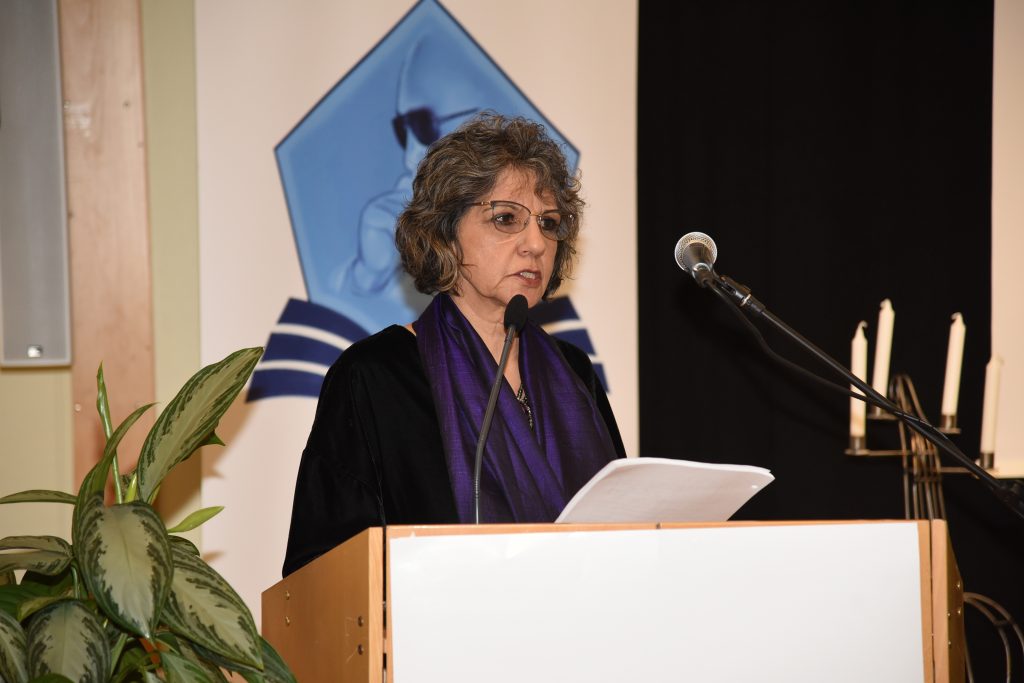
خانم شریفه شریف
خوشاله یم او ویاړم چې د اکرم عثمان د کلنۍ سیالۍ په غونډه کې ګډون لرم . د دې غونډې د ټولو مسووولینو او لیکوالو نه چې زما د ګډون زمینه یې برابره کړې مننه کوم . په تېره د غفوری صاحب چې زما ټول سپارښتونه یې په پام کې نیولی .
د پښتو داستانی ادبیاتو په اړه خبرې ډېرې دی او ځینې د پام وړ څېړنې هم د داستانی ادبیاتو پر تاریځ او د ودې پر بڼو یا فورمونو باندې شوې دی . دلته زه نه غواړم د داستانی ادبیاتو پرڅرنګوالی یا د ودې په بهیر باندې خبرې وکړم . بلکې غواړم د پښتو په لنډو کیسو کې د یوې ټاکلې او ځانګړې موضوع په اړه خبرې وکړم او هغه د څو تنو ځوانو ښځینه لیکوالو په لنډو کیسو کې د فېمنیستی یا ښځپالنې د فلسفې د لید لوری او روایت بهیر دی.
د پښتو داستانی ادبیات او فېمنزم په اړه زرین انځور او اجمل ښکلی لومړنۍ څېړنې کړې او کتابونه یې چاپ شوی چې ما په دې لیکنه کې ترې استفاده کړې ده . په دې لنډه لیکنه کې زه نه غواړم د فېمنزم د عمومیاتو په اړه څه ووایم. خو د دې لیکنې په چوکاټ کې، د فېمېنزم هغه تعریف باید روښانه کړم چې زه یې په دې لیکنه او خپلو نورو څېړنو کې کاروم .
ما ته فېمېنزم یو واحد نړیوال اړخ نه لری چې په لوېدیځ کې یې وده کړې او اوس هم تحول کوی او په نوې بڼه راڅرگندېږی . فېمېنزم نور د نرواکۍ پر وړاندې یو اړخیزه مبارزه نه ده بلکې د ټولنیز عدالت د پلی کولو هڅې دی چې له اقتصادی، سیاسی ، فرهنګی او تاریخی اړیکو سره تړاو لری . د کرستین رینالدو په وینا چې د « د دریمې نړۍ فېمېنزم : بنسټیر تفاوتونه » په لیکنه کې یې کړی ، د ډېرو نورو فکری مفاهیمو په څېر چې له پوست مادرنزم نه وروسته یې نوې بڼې خپلې کړی، دا به منطقی نه وی چې فېمېنزم د یو اړخیزې پدیدې په بڼه وپېژنو . یا فېمنستان ټول یو واحد قشر وبولو .د دې په وینا فېمېنزم اوس د نرواکۍ په وړاندې د مبارزې نه د کاریارکۍ په وړاندې دریدا ته وده کړې . کاریارکی د حاکمیت او محکومیت جوړښت دی نه یوازې د جنستیت پر اساس بلکې د نژاد ، قومیت ، اقتصادی توان یا طبقې ، فزیکی توان ، سن او عمر پر بنسټ خلک د محکوم او حاکم پر پولو بېلوی . اوس فېمېنزم او فمنستان یوازې د ښځو او نارینه و پر اړیکو بحث نه کوی ، بلکې په پراخه او هر اړخیزه توګه ، ټولو هغو پېچلیو او هر اړخیزو اړیکو سره مخامخ دی چې د ټولنې وګړو ، ښځو او نارینه و ته هویتونه ټاکی او د محکومیت یا حاکمیت زمینې ورته برابروی .
د کرستین په وینا د دریمې نړۍ فېمېنزم اوس د نړیوال خوندیتوب یا یووالی نه ورهاخوا ، د ځانګړیو هویتونو او اړیکو پر بنسټ څیړنې او مبارزې دی .
زما په اند، افغانی فېمېنزم یا ښځنپاله لیدلورى که د ټولو ټولنیزو ، سیاسی، او فرهنګی جوړښتونو په وړاندې له مبارزې پرته او بهر، پر یوازی جنسیتی تبعیضونو او محکومیتونو ولاړ وی ، جلا او مجرده پدیده پاتې کېږی او ټولنیز خوځښت نه شی کیدای . البته دا د فرهنګی نسبتی یا کلچرل رلېتوزم د منلو په مانا نه ده.
د همدې فېمېنزمونو او څو اړخیزو هویتونو د پېچلو اړیکو د مفاهیمو په چوکاټ کې دننه ، ما د پښتو لنډو کیسو د ښځینه لیکوالو څو کیسې څیړلی او شننلی دی .
د ښځینه لیکوالو د فېمنستی لید لوری بهیر په پښتو لڼدو کیسو کې څه نا څه د لوېدیځ له فېمنستی بهیر سره پرتله کیدای شی . په لوېدیځ ادبیاتو کې فېمنستی لیکنې په اتلسمې پیړۍ کې له ماری ولستونکرفت سره د ښځو د لومړنیو حقوقو یعنی د زده کړې له غوښتنې نه پیل شوې او بیا یې د لیبرالزم په بڼه تر نولسمې او شلمې پیړۍ پورې دوام وکړ او نورو ټولنیزې، سیاسی او اقتصادی غوښتنې د فېمنستی ادبیاتو موضوعات وټاکل . د ښځینه لیکوالو په کیسو کې د یو واحد یو اړخیز نړیواله واقعیت نه منل او ردول د پوست مادرنزم ا و پوست سترکچرالزم اغیزې وې. په فېېمنستی لیکنو کې د ښځو د څو اړخیزو هویتونو او واقعیتونو او په ټولنیزو او انسانی اړیکو کې د پېچلو پدیدو بیان او انځور دود شو . د ایما یانګ په وینا چې د «د اوسنی فېمېنزم او د ښځو لنډې کیسې »په کتاب کې وایی ، د فېمېنزم لومړۍ څپه د لومړنیو حقونو ِغوښتنې وې ، دوهمه څپه یې د ښځو د یووالی او د هغوى د محکومیت په اړه د خلکو د پوهاوی موضوعات ول . دریم یا اوسنى فمنستی روایت په داستانی ادبیاتو کې ، د شخصی تجربو یا فردیت او ځانګړیتوب غوښتنې دی چې د ټولنیز ، سیاسی او جنسیتی پېچلو اړیکو دننه راڅرگندېږی.
فېمنستی روایت ته ورته بهیر څه ناڅه د پښتو، په تېره ښځینه لیکوالو په کیسو کې لیدل کېږی . که څه هم د ماری ولستونکرفت د شپاړلسمې پېړۍ غوښتنې چې د زده کړو حق و ، افغانی لیکوالو ته نن په افغانستان کې مطرح دی . په عمومی توګه زما په اند، په داستانی ادبیاتو کې فېمنستی لید لورى یا روایت له ټولنیز ریالزم نه پیل شوی او تر اوسه همالته بند پاتې دی . دلیل یې هم ښایې د تاریخی او سیاسی سیستمونو د تدوام شکېدل ، شاته تګ او کړکېچونه وی چې د ښځو له ټولنیز هویت سره یې د مذهب او فرهنګ په نامه لوبې کړی او کوی یې . ټولنیز ریالزم هم په همدې ناخوالو کې د ادبیاتو، په تېره د فېمنستی داستانی ادبیاتو اصلی ستنې پاتېې شوی . ان تر دې چې داستانی جوږښت د محتوى یا ریالیستیکو انګېرنو تر اغېز لاندې راغلی او داستانی جوړښت تر محتوی ځار شوى . په تېره، په لنډه کیسه کې ، کرېکتر او وده یې ، پېښې او د کیسې یووالی یا تمامیت د لیکوال یا لیکوالې د پیام قربانی شوی . ټولنیز واقعیتونه روایت کېږی . داستانی روایت نشته یا ګډ وډ دی . د خبرو اغېزې فورم مات کړی . پیل یې داستانی دی . خو بیا کیسه خپله ادبی لاره نه وهی ، بلکې د لیکوال یا لیکوالې د تعهد او نظریو له ویلو دتلوسو سره سمه څرخی .
لڼده کیسه په پښتو ادبیاتو کې د نړیوال تعریف په کچه ، لږ عمر او لږ لیکوال لری . داستانی فورم ورو وورو پښتو ادبیاتو ته د څو تنو له خوا دود شوی .
لنډې کیسې له ټولنیز ریالستی راپور یا د نکل له بڼې نه ، څه نا څه د لنډې کیسې عمومی فورم خوا ته خوځېدلی . په تېرو شلو کلونو کې لا ډېرو نړیوالو ادبیاتو ته له لاس رسۍ سره، یو شمېر ښځینه و نارینه لیکوال ، له ادبی معیارونو سره سم لڼدې کیسې لیکلی دی.
فېمنستی روایت یا لید لورى د ښځینه لیکوالو د لومړی پړاو په کیسو کې د لیرالزم په چوکاټ کې د ښځو د اساسی حقونو د زده کړې ، د واده اختیار او د زور زیاتی په وړاندې د اعتراض په توګه ، داستانی کرېېکترونو سره بیانېدل . ښځینه کرېکترونه په کیسو کې مظلومې ، محکومې او پسیف یا منفعلې وې. بېېچاره خواره مظلومه ښځه . زرین انځور په خپل کتاب « ادبیات او فېمېنزم » کې د پښتونخوا کیسه لیکونکې زیتون بانو یادوی چې کرېکترونه یې د معمولو او عمومی غوښتنو ورهاخوا ،ښځینه روانی او جسمانی غوښتنې بیان کړی . خو زموږ په کیسو کې تر اوسه هم چې موږ یې بیلګې همدې سیالۍ ته په رارسیدلو کیسو کې ولوستې ، فېمېنزم د محرومو کرېکترونو د ژوند له دراماتیکی پېښو سره روایت شوی چې یو اړخیزې او اټکل شوی پایلې لری.
په دوو تېرو لسیزو کې چې د لوېدیځ له داستانی ادبیاتو سره زموږ د لیکوالو بلدتیا ډېره شوه ، لنډه کیسه د مایکرو فېکشن او ان فلش فېکشن بڼو ته هم وده وکړه . د کیسو فلسفی لید لورى، د ټولنیز ریالزم او لیبرالزم پر ځای د اګزستنشالزم ا و ان د کافکا د نهلستی یا ابزردتی فلسفو نه اغېزمن شو. شخصی تجربې او انګیرنې د کیسې فورم او فضا وټاکله . د اما یانګ خبره، فېمېنزم هر چاته بېل تعریف پیدا کړ. ښځینه لیکوالو خپلې شخصی تجربې او لیدلورى د کیسو په کرېکترونو کې ورګډ کړ . روایتونه فعاله او اکتیف شول .
سبین کولش په « جنسیت او ادبی ژانر یا ډول :لڼد داستان، فېمېنزم او ښځینه تجربې » کتاب کې وایی چې « د افرادو یا وګړو، فرهنګونو او ملتونو په تاریخونو کې تداوم او بدلون ، د قدرت پر جوړښت باندې پوښتنې او غور، او د انډول هویتونو، ژوند کولو او د بیان د بېلو بڼو سره مینه » په لنډو کیسو کې فېمنستی روایت اغېزمن کړ.
د پښتو کیسه لیکونکو شخصی تجربې خامخا له روانو حالاتو او ستونزو او اړیکو نه جلا نه وې او تر ډېېره حده هماغه پخوانۍ غوښتنې او ستونزې وې چې عمومی تجربی دی . خو لږ تر لږه د څو تنو اوسنیو ځوانو لیکوالو په کیسو کې دا شخصی تجربې ، د داستانی فورم یا بڼې په چوکاټ کې داستانی منطق پیدا کړی او محتوی یا موضوع د کیسې د فورم نه بهر ، جلا نه ده پاتې . د کیسې د عناصرو یووالی یا تمامیت یې نه دى مات کړى . غوښتنه یا ستونزه که څه هم عمومی ده ، فېمنستی روایت یو اړخیز نه دی او راوی ، یو واحد محکوم هویت نه لری . ستونزه له یوه واحد او یو اړخیز واقعیت څخه اغېزمنه نه وینی .
د نوی فېمنستی روایت او لید لوری څرکونه د څو تنو اوسنیو ځوانو لیکوالو لکه هیله پسرلۍ ، صفیه وردک ، هما ظفر احمد زۍ او نورو په لنډو کیسو کې لیدل کېږی . دلته مې د هیلې پسرلۍ د لنډو کیسو د ټولگې ، «د ژمې مازدیګر» څو کیسې د بیلګې په توګه څېړلې .
د هیلې په کیسو کې فېمنستی روایت ، ټولنیز ریالیسم او لیبرالزم ته نه دی ایسار شوی ، بلکې د ښځو د غوښتنو عمومی بڼې ، د فردیت او فردی تجربو په شېبو کې سپړل شوې دی . د پوست مادرنستۍ څرک ،د ټولنې جوړښت او واقعیتونو پر وړاندې له پوښتنې او اعتراض سره لګېږی . د روایتونو او راوی فلسفی لید لورى، د فرد یا وګړی په فردی ژوند ، فردی غوښتنو او ازادی باندې له ټینګار سره اګزستنشالستی نښې لری .
د« ګرانې سپوږمۍ » کیسه د یوې افغانې نجلۍ کیسه ده چې د نرواکې ټولنې په یوه معموله ښاری کورنۍ کې اوسېږی . کیسه د ماسپښن یوه شېبه انځوروی چې وروڼه تلویزیون ته ناست دی او د خپلې خوښې لوبې ننداره کوی او نجلۍ ورته چای دموی . دا په تمه ده چې د وروڼو د خوښو له لوبې وروسته ، د خپلې خوښې خپرونه په تلویزیون کې وګوری خو د تلویویزیون د چینلونو واک د وروڼو په لاس کې دی .
دلته هم کرېکتر عنعنوی محکومیت لری . خو لید لورى یا فکر یې فعاله دی . خبرې اوری ، امرونه پر ځای کوی خو نیوکې ، پوښتنې او اعتراض کوی . د کیسې بله ښځینه کرېکتر د راوی نیا ده چې په سمبولیکه بڼه نجلۍ ته د ژغورنې او ازادۍ لاره ښیی . اوبو ته د زړه رازونه تېرول :
« انا به مې ویل خبرې په زړه کې مه ساته. دا چې ځوانه وه په کلی کې د دوی کور ته نږدې د اوبو ویاله وه، دې به ورته د زړه حال تېراوه. »
بیا د متالوژۍ او فولکور نه ورهاخوا، د واقعی او اوسنی ژوند انځور:
« انا جانې به له ټوکو ویل : تاسې ښاریانې بېچارګانې خو نه ګودر لرئ ، نه ویاله نو هغه د تشناب اکرب سورسطل له اوبو ډکوه، د زړه حال ورته وایه .» ( د ژمی مازدیګر، ۸۶)
دلته اوبه او بهېدا یې د ژوند د ازادۍ او خپلواکۍ سمبول دی او د کرېکتر د عکس العمل او د ژغورنې د لارې لټولو انځور.
هیلې دا معمولی او عمومی اعتراض ته چې واک یې د پلار او وروڼو په لاس کې دی ، د خپلې شخصی تجربې او خوښۍ له بیان سره ، فردیت او ځانګړیتوب ورکړی .
«لالا مې نه پریږدی چې د اختر کمیس دوه ګوتې لڼد جوړکړم. اغا جان دغه یوه خبره کلکه نیولې چې زنانه دارلمعملین به وایې . اوس نو اغا جان څنګه پوه کړم چې پوهنتون خو څه حمام نه دی چې زنانه او مردانه ولری . اوف .
پخوا مې کرېکټ کاته ، څو لوبغاړو ته مې ښایسته وویل، لالا راته بد بد وکتل، بیا مې کرېکټ پرېښود .»
راوی د ورور د امرونو او محدودیتونو په وړاندې چې د دې پر کړو وړو تپل کېږی ، چوپه نه پاتې کېږی . ځواب ورته وایی او په منطق یې ردوی :
«دا کړکۍ دې ولې خلاصه کړې؟ پرده کش کړه، له هغه بلاکه ښکارې.
– سترګې نه لرې، ګروپ ګل دی .
– تا ته نه ښکاری خو د بلاک والو ته ښکارې. کش یې کړه کنه لالا ته وایم.
-توبه خدایه دا ده کش مې کړه. »
د فردی ازادۍ غوښتنې او له محکومیته خلاصېدل ، له کړکۍ او سپوږمۍ سره د زړه خواله سره بیانیږی . سپوږمۍ ته حال ویل ، اسمان ته کتل سمبولیکه لوړیدا او ازادی ده. او د نیا د ژغورنې د سپارښتنې نوې او بدل شوې بڼه.
« د تشناب له اکرب سور سطل سره مې خبرې نه کېږی. چې کوچنۍ وم له ستورو سره غږېدم خو ډېر وخت کېږی چې د کابل په اسمان کې یوازې سپوږمۍ پاتې ده . له کړکۍ یې څارم . نن سپوږمۍ پوره ګرده ده. چې پوره ګرده وی داسې ګڼم چې مخامخ راته ناسته ده او چې نوې رابره شوې وی بیا داسې ګڼم لکه په تیلفون چې له چا سره غږېږم.
ګرانې سپوږمۍ. ډېر وخت نه یو سره غږېدلی خو څه به درته وایم ، خاص څه نشته، ژوند همدا یو رقم روان دی، وړې وړې خبرې، لویې لویې خلقتنګۍ »
دا وړې وړې خبرې هرې ښځې ته بېلې دی خو د همدې وړو وړو خبرو لمن لویو ټولنیزو ، اقتصادی ، سیاسی او فرهنګی ستونزو ته پراخیږی او د ټولو یا عمومی او ټولنیزه ستونزه ګرځی .
د «پردی » کیسه د هیلې په کیسو کې د فېمنستی څو اړخیزو هویتونو او د اګزنستشالست فلسفی لید لوری بله بېلګه ده . په دې کیسه کې ان د کافکا د نهلستۍ او ابزردیتۍ فلسفی څرکونه هم لګېږی . دا د یوې واده شوې مېرمنې کیسه ده چې هره ورځ ځنګل ته ځی او هیڅوک او هیڅ شی یې ځنګله ته د تګ مخه نه شی نیولی . په ځنګل کې له یوه پردی سړی سره اشنا کېږی او دا اشنایی ورو ورو په یوه احساسی اړیکه بدلېږی . دلته کرېکتره د ځان فردی یا وګړنیزه غوښتنه تر هر څه مهمه ګڼی . د دې شخصی او نفسانی یا روانی غوښتنې په خاطر ، معمولو تپل شویو اخلاقی قوانینو ته شا اړوی . یا لږ تر لږه ، له ځانه سره یې تحلیلوی او توجیه کوی یې .
« موږ تر پایه له یو بله ونه پوښتل چې واده مو کړی که نه؟ اولاد لرو که نه؟ څه کار کوو؟ عمر مو څومره دی؟ څه مو لوستی دی. اصلا په هغو شېبو کې چې سره ناست وو، زما لپاره دغه ټولې خبرې بې مانا وې . هغه شېبې لنډې وې د اونۍ تر ټولو مهمې شېبې وې. نه پوهېږم له هغه سره په خبرو کې مې ځان پیدا کاوه که له ځانه پردۍ کېدلم. ما حتا په دې فکر نه کاوه چې دا لیدل ښه دی که بد. اصلا تر ښه او بد ور ها خوا یو څه روان ول. انسانان عجب دی. هر څه یې په ښه او بد ویشلی دی. د ښه او بد تر مینځ ډېر څه کېږی چې موږ ورته نوم نه لرو، تر ښه او بد ورها خوا هم داسې څه شته چې په کلماتو نه بیانېږی خو انسان به یې یا ښه بولی یا بد.»
دا د ښه او بد ور ها خوا مساله یا موضوع، د ځان د هستۍ جوهر دی او د فردی غوښتنې پوښتنه .
په ژوند کې له مېړه او اولادونو سره سره د یوازیتوب لټول ، زمان زندان ګڼل ، د نهلستی فلسفې اغیزې دی چې د ښځې او پردی سړی په دیالوګ کې بیانېږی:
« سم نه پوهېږم خو په ځنګله کې تنهایی لټوم او دغه لټون مې خوښ دی.
-نو دلته تنهایی مومې؟
-فکر کوم هو.
-ته نېکمرغه یې .
– ته په څه پسې ګرځې؟
ازادی
- له څه شی ازادی؟
- -له زمانه ……»
د صفیې وردک په لڼدو کیسو «باد»، « ماریا» ، «کړکۍ» او نورو کې چې د تاند په ویبپاڼه کې خپرې شوې دی هم د فېمنستی د نوې بڼې یا د څو اړخیزې او څو بڼیزې فېمېنزمونو د بڼوڅرکونه معلومېږی . باد د ژوند په یوه شیبه کې د دوو تنو محاوره ده د مایکرو فکشن په بڼه . د کیسې لید لورى پر ټولنیز جوړښت باندې پوښتنې دی :
« شرایط موږ جوړوو که شرایط موږ جوړوی ؟»
د یادو شویو کیسو بېلګې له بد ه مرغه ډېرې نه دی . یوازې د څو تنو ځوانو لیکوالو لیکنې دی چې د لوېدیځ له فلسفې او ادبیاتو سره بلدې دی . فېمنستی روایت د نارینه او ښځینه لیکوالو په کیسو کې تر ډېره حده هماغه د ښځو د یو اړخیز ماهیت او د جنسیت پر بنسټ د هغو د محکومیت مسالې دی . د ښځو د محکومیت واقعیت نه دی زوړ شوی او نه هم ختم دی . همدا اوس په افغانستان کې ښه په ځوږ د منځنیو پېړیو په بڼه روان دی . خو د محکومیت اړیکې له ټولنیز ، سیاسی او فرهنګی جوړښت سره څو اړخیز او بدلې شوی دی . فېمېنزم په فېمېنزمونو بدل شوی . ښځه یو هویت او یو ډول غوښتنې نه لری . فېمېنزم یوازې له نرواکۍ سره مبارزه نه ده ، جنسیت یواځینی تبیعض نه دی ، او ستونزمنه اړیکه یوازې د نارینه او ښځې تر منیځ اړیکه نه ده. له دې سره په کیسو کې فېمنستی روایتونه بدل شوی او باید بدل شی .
هیله ده چې د هیلې پسرلۍ او نورو ځوانو لیکوالو کیسې هم له دې بنسټیز او فرهنګی بدلونونو او اوښتونو سره سم ، لا نوې بڼې غوره کړی او لا نوی لید لوری او روایتونه ولری .
رفرنسونه :
- هیله پسرلی، د ژمی مازدیګر ، سروش کتاب پلورنځی ، ۲۰۲۱
- صفیه وردک ، « باد » ، د تاند ویبپاڼه
- زرین انځور ، فېمېنزم او ادبیات
- بیواکه صورتونه ،اجمل ښکلی
- ایما یانګ ، فېمېنزم او د اوسنیو ښځو لڼدې کیسې ، دایدنبرګ د پوهنتون خپرونه ، ۲۰۱۴
Emma Young, contemporary Feminism and Women’s Short Stories, Edinburgh University Press, 2014.
Kristine Rynaldo : Feminism Foregrounding Difference
- https://www.scribd.com/document/155924844/Third-World-Feminism-Foregrounding-Difference
- Sabine Coelsch, Gender & Gnre: short Fiction, Feminism and Female Experience, Cambridge
University, 2016
————————————————————————————————————-
Contemporary Female Pashto Short Story Writers Feminist Narrative and Point of View
(It is an honour to participate in Akram Osman Literary Festival. I would like to thank the organizers for their
invite, particularly Rahim Ghafouri who has accommodated my personal travel needs.)
There is a lot to say about Pashto fiction. Significant research has also been undertaken on Pashto fiction and its historical and structural development. Here, I do not intend to analyze Pashto fiction, or discuss its evolving process. Rather, I wish to discuss a specific topic which is the evolvement of feminist point of view and narrative in short stories of female Pashto short story writers.
Zareen Anzor and Ajmal Khkolai have discussed feminism in Pashto literature in their published books. Discussion of feminism in its totality is beyond the scope of this presentation. However, I should clarify my own perspective on feminism, as I have applied it in the context of this article and my other research.
Feminism, in my view is not a universal monolithic entity that has developed in the west and is still evolving with new forms and layers. Feminism, in my view, is no longer mere struggle against Patriarchy, but has embraced a fight for social justice intersected with gender, economic, social, cultural, political, and historical realities. As Kristine Reynaldo argues in “Third World Feminism: Foregrounding Differences, as it is true with all other postmodernist emerging thought, it will not make sense to treat feminism as a monolithic entity, or consider feminist a homogeneous category. She believes that feminism has evolved from mere struggle against patriarchy to a fight against kyriarchy which is a system of division between oppressed and oppressor, not only, on gender basis, but in all forms of class, race, ethnicity, ableism, sexuality, and age. In the context of Afghanistan, one can add the division of rural and urban to this spectrum. The discourse of feminism and feminists today is not exclusively about the relation between men and women, but it deals with complex and intricate relations that define certain identities for both men and women positioned them as oppressor and oppressed. Reynaldo adds that, third word feminism has now grown beyond the universal sisterhood and embraces multiple relation and individual identities.
I believe that if Afghan feminism does not embrace systemic fight against all form of social, political, economic, and cultural realities, it would remain an abstract entity and will not turn into a social movement. This does not refer or endorses cultural relativism, in my view. In this presentation, I have reviewed a few short stories of some contemporary female Afghan writers in the context of the above definition and interpretation of feminism.
The progression of feminist narrative in short stories by Afghan female writers can be compared to that of feminist fiction in the west. In a general and summary, one can say that feminist narrative in the west started with Mary Wollstonecraft in 1759 by voicing women’s basic right – education and continued to 19 and 20 centuries liberalism including more social, political, and economic rights. Post-modernist feminists rejected the universal monolithic reality and instead introduced multiple layers of individuality and complex human relations in their fiction.
As Emma Young argues in, Contemporary Feminism and Women’s Short Stories, the first wave of feminist narrative in fiction reflected women’s desire for their basic rights. The second wave dealt with public awareness about women’s oppression and their unity. The third or current feminist narrative in fiction deals with women’s individuality, their individual desires and experience in the context of political, gender and social realities and relations.
Similar process of feminist narrative can be traced in stories of Afghan female writers. Although Mary Wollstonecraft’s demand of the 18th centrurey for right of education has become the fight of Afghan feminist today. I believe, overall, the feminist narrative in short stories of Afghan female writers has started with social realism and is still stuck there. One reason for this dependency might be the discontinuity and/or regression of the political systems that objectified and politicized women’s identity in the context of culture and religion. During this calamities, social realism has remained the pillar of fiction for female writers. This dependency on social realism has mostly dominated the structure and form in short stories. Structure has been compromised for voicing the writer’s ideology. Character and its development, narrative, and unity of elements in short stories have been adjusted to incorporate the theme. Reporting social realities replaces and distorts literary narrative. Stories begin within literary structure but change to journalistic reporting of the writer’s ideology and quest.
Short story in its western definition and format has a short history and few writers in Afghanistan. Few writers who were familiar with the western literature has introduced modern short story. In other words, short fiction writing has evolved from social realistic report writing and anecdote to literary genre of short story. During the last two decades with available exposure and access to world literature, a few female and male writers have written short stories within the standard literary format.
Feminist narrative in the first phase of Pashto female fiction was reflected in characters with needs for the basic rights of education, choice of marriage, work, and opposing domestic violence. The female character was portraited as objectified victims: poor, oppressed, abused, passive woman.
In his book, Feminism in Literature, Zareen Anzor has referred to Zaitoon Banu, a short story writer in Pakhtunkhwa who has unfolded inner layers of women’s sexual and psychological desire through her characters. However, inside Afghanistan, traces of such openness can be seen only in the stories of emerging writers. Even in stories that we received for Akram Osman Short Story Contest this year, the female characters for the most part are victimized deprived women whose life are subject to dramatic twists and have predictable emotionally charged ending.
During the last two decades of access to world literature, short fiction has included micro fiction and flash fiction. Existentialism and even Kafka’s Absurdity views have influenced writers’ narratives. Personal and individual experience started to shape the narrative, point of view, characters and atmosphere of the stories. According to Emma Younge, feminism became feminisms. Individual writers defined and interpreted feminism in their own ways. In, Gender & Genre: Short Fiction, Feminism and Female Experience, Sabine Coelschlcol argues that:
Continuities and discontinuities in the histories of individuals, cultures and nations, the probing into power structures and the interest in alternative identities, lifestyle and modes of expression shaped feminist consciousness.
Although, personal experience of female Pashto story writers could not remain unaffected by and separated from the collective needs of the Afghan society, in few stories, at least, the narratives reflected individual preferences. The theme of the story that was previously dominating short stories’ structure blended into the structure and inner logic of the story. Hence, voicing the collective and general needs, the feminist narrative did not reflect monolithic realities and the protagonist didn’t portray a homogeneous identity. Conflict was not cause and effect of one-dimensional patriarchal oppression.
Traces of this new feminist narrative can be seen in short stories of Heela Pasarlay, Safia Wardak, Homa Zafar Ahmadzai and some others. Here, I have looked at a couple of Heela Pasarlay’s stories from her collection, “Winter Sunset “De Zhemay Mazdeegar”.
In Heela’s stories, feminist narrative is not bound to a collective social realism, but the collective needs are embedded in moments of personal and individual experience. Questioning the social structure and realities is reminiscence of postmodernist writings. Affirmation and stressing essence of individual and personal needs for freedom shape the writer’s existentialist philosophical vision.
“Dear Moon” is story of an Afghan girl who lives in a middle-class urban family in a patriarchal society. The story depicts moments of a late afternoon when the brothers are watching their favourite game on T.V. and the girls- the sister is serving them tea. She is hoping to watch her favourtie show after the game is over, but the remote is in the hands and control of her brothers.
Here, also the girl -protagonist is victim of traditional gender oppression. But her narrative has a voice. She listens to the brothers, obey them, but argues and asks questions. The grandmother is another character in the story who symbolically teaches the protagonist ways of survival and freedom: share your stories with running water.
“Grandma would tell me not to keep things to myself. When she was young, there was a stream near their house in the village. She would pour her heart out to the running water.” (Winter Sunset) p.86
Then, beyond mythology and folklore, there is a vivid description of day-to-day life:
“Grand- nanny would jokingly say: your poor city people don’t have neither a Godar (a bank or river where girls fetch water), nor a stream. Just fill up the red bucket in the bathroom with water and pour your heart out to it.”
Here, running water symbolizes freedom and depicts the girls’ quest for survival.
The complaint here too is common and collective: fathers and brothers’ control over every choice in life, but by expressing small personal preferences, Heela gives it individuality and existential shape.
“My older brother -laala- does not allow me to have my Eid clothes two inches shorter. Dad is obsessed with just this one word that I should study in the female teacher training institute. Now who is going to make Dad understand that college is not a public bath (hamam) to have separate female and male sections. Sigh!
Previously I used to watch cricket on T.V. I called few players handsome. Laala stared at me angrily. I quit watching Cricket. “
The protagonist in this story is not silent and passive against the restrictions that brothers impose on her. She has answers and argues with logic and reason. The following is a dialogue between the sisters and brother while she is sitting at the window and looks at the moon in a dark room.:
“- Why have you opened the window? Pull up the curtains. You are visible from the opposite building.
-Don’t you have eyes? The light is turned off.
-You do not see them, but they can see you. Pull them up, or I will tell big brother- Laala!
-Damn it! Here, it’s pulled. “
Having heart to heart talk with the moon and opening the window, symbolize desire for personal freedom away from oppression. Looking at the sky and talking to the moon suggests rising and freedom and a change from the grand-ma’s solutions:
“Dear moon! We haven’t talk for a while. What should I tell you? Nothing special. Life goes on the same way- small, small issues, huge, huge depression.”
These small, small talks is unique and individual to every woman, but these small talks and issues expand to huge social, economic, political and cultural issues and become big collective problems.
The story of “Stranger “is another example of existentialist philosophy and woman’s multilayered and multi-dimensional identities. The narrative in this story, to some extend is influenced by Kafka’s absurdity theory. This is a story of a married woman who goes to the forest every day. Nothing and no one can stop her from her daily walk in the jungle. She meets a man in the forest and starts having conversations with him. This acquaintance gradually changes to an emotional relation. In her inner debate, the protagonist gives more importance to her inner psychological and physical desires than everything else. She is rebellious against the imposed traditional moral rules to defend her physiological inner desire. Or at least she analysis and justifies it in her inner debate.
“Until the end, we didn’t’ ask each other whether we are married, or not? Have children, or not? What do we do for living? How old were we? What have we studied? In fact, when we were sitting together these questions were meaningless to me. Those moments were short, but most important moments of the day. I don’t know if I was finding myself or becoming estranged from myself when I was with him. I didn’t even think about whether seeing him was good, or, bad. Something was going on beyond good and bad. Human being are strange creatures. They have divided everything into good and evil. A lot is happening between good and evil that we don’t have words for. Beyond good and bad there are things that cannot be expressed in words, but human beings are considering it, either good, or bad. “(Winter Sunset, p. 49.)
Something beyond good and evil is the essence of being and the reflection of inner desire. Seeking solitude despite having husband and children and viewing ‘time’ as prison are reflections of nihilism in the dialogues between the protagonist and the stranger:
“– I am not sure, but in the forest, I seek solitude and like this search.
-Do you find solitude in here?
-I think so.
– You are fortunate.
-What is it that you are searching for?
– Freedom.
– Freedom from what?
– From time.”
(Winter Sunset, p. 50)
Safia Wardak is another female short story writer whose stories reflect multilayer identities and multi- intersected dimensions of feminism. Some examples of her stories that have been published in Taand web page are “wind”, “Maria”, “Window”. “Wind”, is a micro-fiction in the form of a dialogue between two women. Questioning the social structure is indicative of post-modernist feminist narrative:
“Is it us who form and create the social relations and conditions, or the conditions form us?”
The examples of above stories are not many in short stories of Afghan female writers. A few who are familiar with western literature and philosophy embrace the active feminist narrative in their stories. In the most part, feminist narrative in the short stories of both Afghan men and women remain restricted to women’s monolithic identity and their gender-based oppression. The reality of women’s oppression is neither old, nor ended. This very day in Afghanistan, women are faced with the forms of oppression going back to middles ages.
However, the dynamics of oppression have taken multilayers shapes within the political, social, economic, and cultural realties and conditions. Feminism has changed to feminisms. Women do not have a unified identity and needs. Feminism is not a sole struggle against patriarchy. Discrimination is not only gender based, and oppressive relation is not restricted to the relation between a man and a woman. Hence, the narratives in stories have changed and must change.
I hope short stories of Heela Pasarlay and other young female writers evolve to embrace yet newer forms and more updated narratives as th,e society and culture progress, or regress.
April 30, 2022
Akram Osman Annual Literary Festival
By: Sharifa Sharif
References
- Heela Pasarlay, Winter Sunset, Soroosh Publication, 2021
- Safia Wardak, “Wind”, in taand.net
- Zareen Anzor, Feminism and Literature
- Ajmal Khkolai, Free Faces: Literary Feminist Vies, Samoon Publisher, 2020
- Emma Young, Contemporary Feminism and Women’s Short Stories, Edinburgh University Press, 2014
- Kristine Reynaldo, “Third World Feminism: Foregrounding Differences”, https://www.scribd.com/document/155924844/Third-World-Feminism-Foregrounding-Differences
- Sabine Coelsch, Gender & Genre: Short Fiction, Feminism and Female Experience, Cambridge University Press, 2016

